M Gopi
GAMesh: Guided and Augmented Meshing for Deep Point Networks
Oct 19, 2020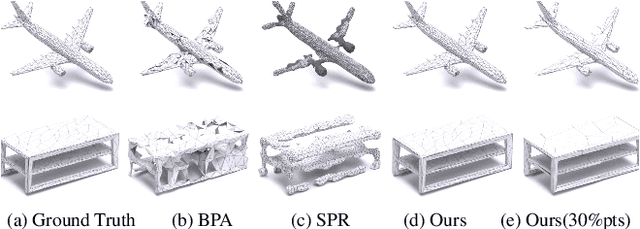
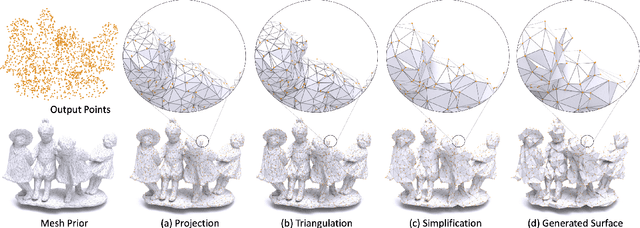
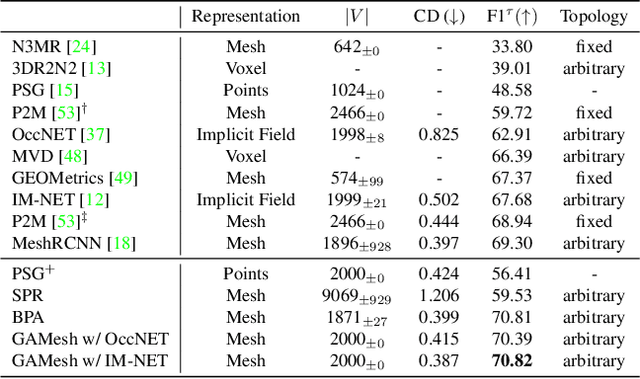
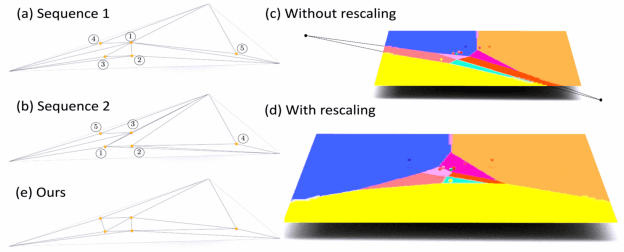
Abstract:We present a new meshing algorithm called guided and augmented meshing, GAMesh, which uses a mesh prior to generate a surface for the output points of a point network. By projecting the output points onto this prior and simplifying the resulting mesh, GAMesh ensures a surface with the same topology as the mesh prior but whose geometric fidelity is controlled by the point network. This makes GAMesh independent of both the density and distribution of the output points, a common artifact in traditional surface reconstruction algorithms. We show that such a separation of geometry from topology can have several advantages especially in single-view shape prediction, fair evaluation of point networks and reconstructing surfaces for networks which output sparse point clouds. We further show that by training point networks with GAMesh, we can directly optimize the vertex positions to generate adaptive meshes with arbitrary topologies.
Learning Embedding of 3D models with Quadric Loss
Jul 24, 2019
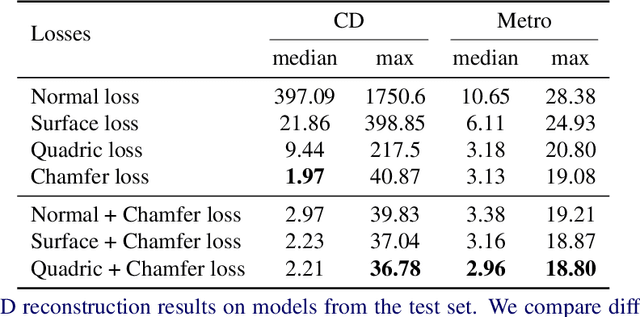
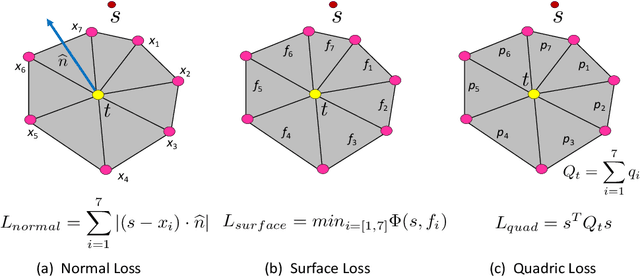
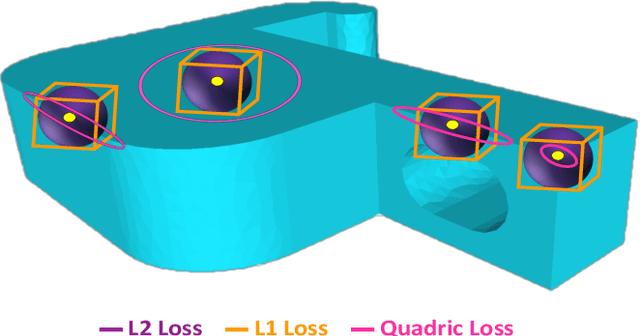
Abstract:Sharp features such as edges and corners play an important role in the perception of 3D models. In order to capture them better, we propose quadric loss, a point-surface loss function, which minimizes the quadric error between the reconstructed points and the input surface. Computation of Quadric loss is easy, efficient since the quadric matrices can be computed apriori, and is fully differentiable, making quadric loss suitable for training point and mesh based architectures. Through extensive experiments we show the merits and demerits of quadric loss. When combined with Chamfer loss, quadric loss achieves better reconstruction results as compared to any one of them or other point-surface loss functions.
 Add to Chrome
Add to Chrome Add to Firefox
Add to Firefox Add to Edge
Add to Edge